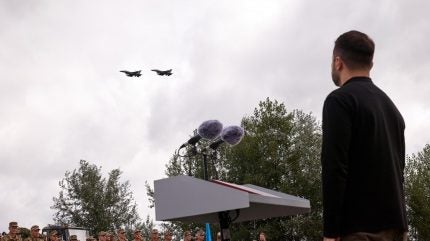
The US Air Force’s 68th Electronic Warfare Squadron (EWS) has reprogrammed the electronic warfare (EW) systems of F-16 jets being transferred from Denmark to the Netherlands – this effort is part of a larger initiative to bolster Ukraine’s defences against Russia’s electromagnetic warfare capabilities.
Norway and the Netherlands are bolstering Ukraine’s air defence capabilities amid the ongoing conflict with Russia. Norway will contribute six surplus F-16 aircraft to Ukraine by the end of 2024. Meanwhile, the Netherlands is stepping up its support by providing 24 F-16s and an additional €300m ($336) for ammunition.
Reprogramming an unfamiliar EW system under deadlines to ensure the jets were combat-ready upon their delivery to Ukraine was daunting. The squadron’s chief engineer highlighted the gravity of the mission, stating, “Most reprogramming centres would have said ‘no way’ when approaching this challenge; it’s uncharted policy.”
To overcome these challenges, the 68th EWS broke away from conventional procedures, sending its team members overseas to work directly in partner-nation laboratories in Denmark and Norway. This hands-on, collaborative approach was key to developing and testing system updates.
By working alongside their Danish and Norwegian counterparts, the 68th EWS managed to refine and improve the reprogramming processes.
As Ukraine received its first F-16 fighter jets from European allies, Russia intensified its attacks on Ukrainian airfields, targeting sites like Starokostiantyniv that are expected to house these new jets.

US Tariffs are shifting - will you react or anticipate?
Don’t let policy changes catch you off guard. Stay proactive with real-time data and expert analysis.
By GlobalDataThe collaboration has enhanced the Ukrainian Air Force’s immediate capabilities and strengthened the partnership between the US and its Nato allies.
Moreover, the operation has fast-tracked Ukraine’s integration into a global coalition of nations supported by the 68th EWS. The data from the Ukrainian battlefield will now be used to further refine EW capabilities, benefiting all 31 countries within the 68th EWS’s portfolio.
The director emphasised the impact of these efforts, noting that while one F-16 with an upgraded EW system might not single-handedly change the course of the conflict, it can provide crucial moments, allowing Ukrainian forces to achieve objectives with strategic outcomes.



